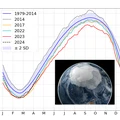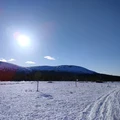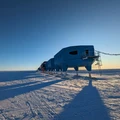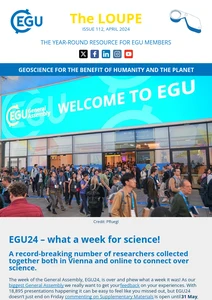President: Carleen Tijm-Reijmer
(cr@egu.eu)
Deputy President: Daniel Farinotti
(daniel.farinotti@ethz.ch)
The cryosphere are those parts of the Earth and other planetary bodies that are subject to prolonged periods of temperatures below the freezing point of water. These include glaciers, frozen ground, sea ice, snow and ice. One of the main aims of the EGU Division on Cryospheric Sciences (CR) is to facilitate the exchange of information within the science community. It does so by organising series of sessions at the annual EGU General Assembly, and through the publishing of the open-access journal The Cryosphere. The division awards the Julia and Johannes Weertman medal for outstanding contributions to the science of the cryosphere.
Recent awardees

- 2024
- Julia and Johannes Weertman Medal
The 2024 Julia and Johannes Weertman Medal is awarded to
Gwenn E. Flowers for outstanding research in the field of the theoretical and observational hydrology of glaciers, ice caps and continental ice masses.
Read more

- 2024
- Arne Richter Award for Outstanding Early Career Scientists
The 2024 Arne Richter Award for Outstanding Early Career Scientists is awarded to
Laura A. Stevens for outstanding research into the links between glacial hydrology and ice dynamics, and for their service to the cryosphere community.
Read more

- 2023
- Julia and Johannes Weertman Medal
The 2023 Julia and Johannes Weertman Medal is awarded to
Etienne Berthier for outstanding scientific achievements in regional and global glacier mass change and remote sensing, and for immense service to the global cryospheric community.
Read more

- 2023
- Outstanding Student and PhD candidate Presentation (OSPP) Award
The 2023 Outstanding Student and PhD candidate Presentation (OSPP) Award is awarded to
Jelte de Bruin Detecting permafrost freeze-thaw front propagation using time-laps ERT observations in a large column experiment
Read more

- 2023
- Outstanding Student and PhD candidate Presentation (OSPP) Award
The 2023 Outstanding Student and PhD candidate Presentation (OSPP) Award is awarded to
Sanne Veldhuijsen The response of the Antarctic firn layer to future warming
Read more

- 2023
- Arne Richter Award for Outstanding Early Career Scientists
The 2023 Arne Richter Award for Outstanding Early Career Scientists is awarded to
Harry Zekollari for outstanding research in the field of mass balance and glacier evolution modelling, and for his service to the cryosphere community.
Read more
Latest posts from the CR blog

You thought it was over? Here’s more on the 2023 Antarctic sea-ice extent record low
In November last year (see this post), we promised to provide you an update of what happened with Antarctic sea ice during the year 2023 – a year of an exceptionally low extent. In this post, we try our best to discuss the conditions that lead to (part of) the recent loss in Antarctic sea ice, including atmospheric and ocean processes. How sea ice usually works… One of the ways scientists have to monitor the state of Antarctic sea ice …
Read more

Are you ready for EGU 2024?
Are you planning on attending the EGU General Assembly happening very shortly in Vienna, Austria? – We are! As every year, we are very much looking forward to connecting with you during the various events and are very excited to already share some of our highlights with you today. Keep an eye open on social media for daily cryosphere highlights during EGU! Would you like to meet us? Find us at the EGU Cryo blog lunch and the Cryo division …
Read more

The joy of collecting snow meltwater: a problem-solving hunt for meltwater in Northern Finland
We know that climate change is affecting many aspects of what we have considered “stable” throughout a long period of modern times. One of many impacted and changing factors is snow and thereby also snow meltwater. One way to study meltwater is to trace it by the usage of stable water isotope signals and we plan to use it by asking: Are we underestimating the portions of snow meltwater in different snow affected environments when we use stable water isotope …
Read more

Did you know? We can see what’s going on inside an ice shelf using geophysics!
Understanding what is going on inside an ice shelf is important for many reasons. But mostly, it allows us to better understand their contribution to sea level rise, and to understand how they are changing and evolve over time, with our changing climate. Geophysical methods offer a means to be able to see inside an ice shelf, and get an idea of their properties. Read on to find out a bit more about how they work. Introduction Halley VI research …
Read more
Current issue of the EGU newsletter
In our April Issue, we reflect on EGU24 our biggest General Assembly so far, all the science covered and special events, and ask for your help planning for EGU25 by filling out our quick feedback survey.
Just because the meeting has ended doesn’t mean EGU stops working for you though! If you have stirred up some media interest in your research recently, why not check out our Resource of the Month, the EGU Science-Media Toolkit, get all your Science for Policy questions answered at our next EGU #science4policy Hangout on 6 May and join the first in a new webinar series Uneven Ground examining fieldwork barriers for women, on 7 May.
Read more











